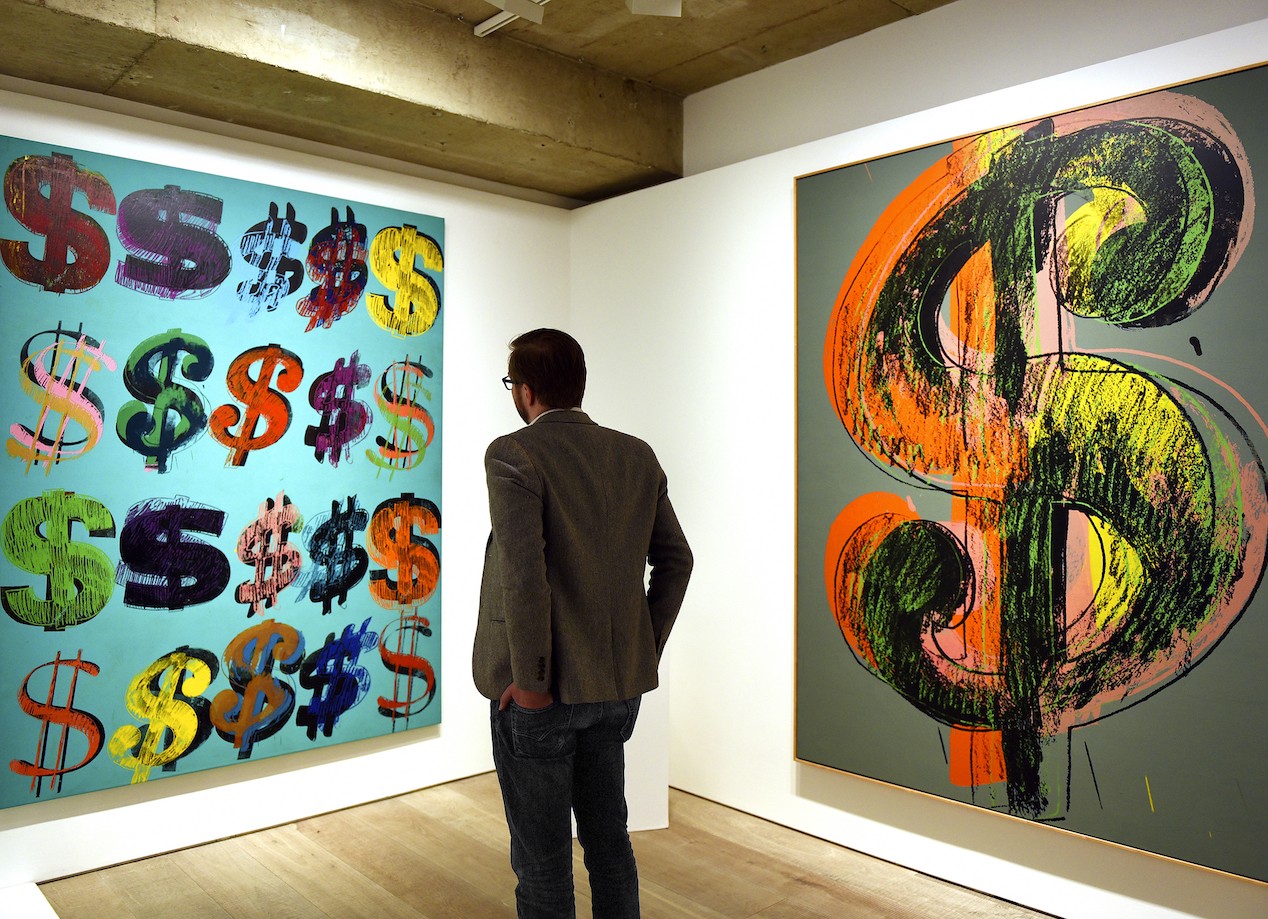How do you know when you’ve found the one? When it comes to buying art, the answer is not always that clear. Before you head out into the vast world of art in search of the pieces to build your collection, arm yourself with our advice on what to expect from the process.
A visitor studies Mary Corse’s Untitled (White Light Series) in Sotheby’s New York showroom; Photo: Alina Girshovich
Don’t be in it for the money
The idea of art as investment has exploded in the last decade, evidenced by the proliferation of art funds and the increasing globalization of the art market, not to mention the record high price tags recently set at auctions. But if your goal is to build an aesthetically pleasing and personal collection, pure investment value should not be your main consideration. Certainly, attention should be paid to understanding the correct worth of a piece, but first and foremost, your decision should be based on your own preferences and the value of the work to you. Buy what you like to look at—a piece that inspires you, moves you, and challenges you. Avoid the pitfall of buying a work that doesn't resonate just because it is a sought-after artist and you’ve been advised that the value will skyrocket. There is never a guarantee that it will.
Where to buy
Galleries
Once your decision to collect has been made (and for the right reasons), how do you know where to begin your quest? You can start in a gallery. The advantage of going this route is that you can take more time in making a decision and in some cases even enjoy the added benefit of an at-home trial period. The authenticity of work sold at galleries is normally guaranteed, an established relationship with a gallery can give you advance access to new pieces, and the price can be negotiated. But, with all of the benefits comes a downside: usually the asking price is higher than at auction.
Auctions
If you head to an auction instead, you’ll likely find that the price is more favorable and closer to market value, but be prepared to act quickly. Make sure to have a bidding strategy and a set price ceiling, and, in some cases, consider bringing your own valuation specialist to ascertain the value and condition of the work. If you prefer making purchases from the comfort of your own home, then perhaps you can try your hand at online auctions. Major auction houses, such as Sotheby’s and Christie’s make the process even easier by allowing you to see the works in person, ahead of the online sales.
Art Fairs
Last but not least, if you have the stamina – head to an art fair. What is most likely to be an overwhelming experience can also be the most fruitful. Art fairs offer the widest variety: most are international in scope, provide the exposure to new artists, and allow you to view a lot of work in a short period. But, be ready to beat the fierce competition—make quick decisions and solid offers, and try to get ahead with advance VIP viewings.
What to buy
We’re not afraid to stress this again: buy what speaks to you. But, while keeping that in mind – whether your preference is historical or contemporary art—aim to buy the best possible and make sure to correctly analyze the value. Search for the best examples of work by your chosen contemporary artist or from artists within a historical movement. A few things to consider in analyzing the work: has the artist received critical and curatorial recognition? Does the artist have gallery representation? Were the works included in museums or personal collections? For historical work in particular, pay special attention to provenance, established authenticity as well as the condition, and consider hiring a knowledgeable art advisor to help with the process.
How to buy
Before you reach the last step of the process—finalizing the deal—be sure to conduct thorough research first. Investigate the work and artist in question, and understand the best value and price. Unless you’re buying at auction, polish off your negotiation skills, ask for the best price and make your best counter-offer, but make sure to never “insult” the merchandise by aiming too low. And once a number is agreed upon, don’t be afraid to ask for extras like free shipping.
Written by Alina Girshovich
Featured Image: A visitor studies Andy Warhol’s "Dollar Signs" in Sotheby’s London showroom; Photo: Mary Turner/Getty Images

